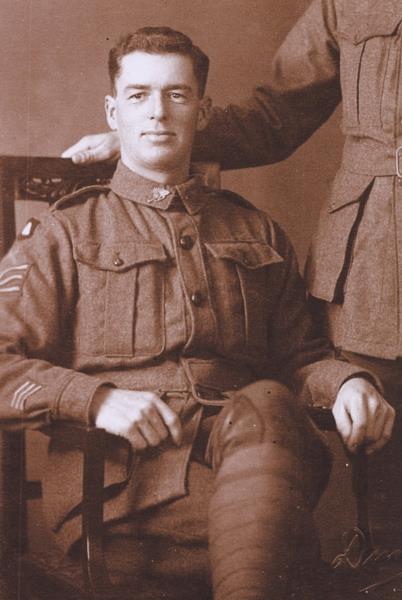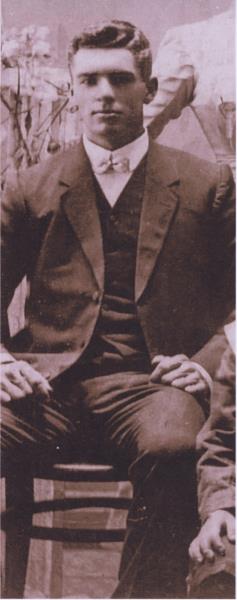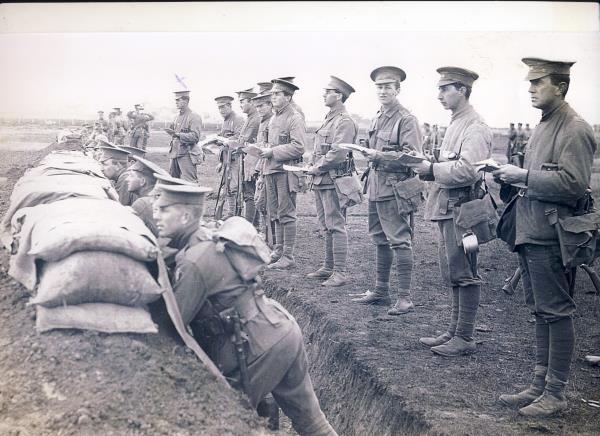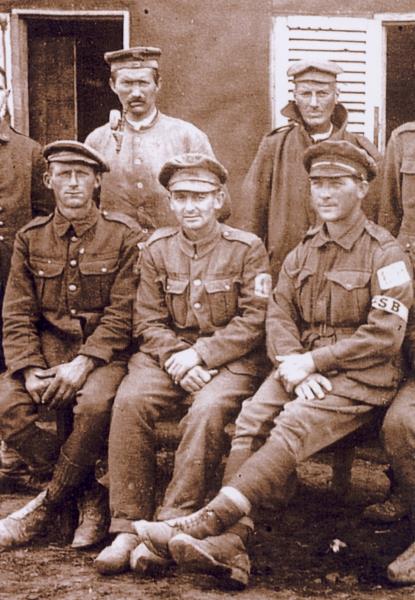The Gazette’s Anzac Centenary special edition carries with it added significance for reporter RUSSELL BENNETT, whose great grandfather Charles Carey McPhee was a prisoner of war. Russell spoke with his mother, Sue Jarvis, and grandmother Gwen about this man of the cloth in the Great War…
MUM says it’s likely that I get my height from her grandfather, but I’d gladly be a foot shorter if I got his character instead.
Charles Carey McPhee, born in 1887, was one of a large family of children who were born in the Victorian goldfields. But the family ultimately moved to Melbourne after his father, Robert, lost his money through a bad investment in a goldmine.
Feeling his first sense of a need to be part of a cause greater than his own, Charles joined the Wesleyan Church and became a home missionary – visiting communities from Pakenham right through Gippsland on horseback.
He was billeted out to local families at the different communities he visited, due to the time it took to travel back to the city. And it was in Yallock, east of Kooweerup, that he met his future wife Nellie Doris Savage – my great grandmother.
They met, fell in love and were engaged for a number of years. World War I intervened.
“Grandpa McPhee hated guns and he hated the idea of war, but Australia had lost a lot of men and were running out of soldiers,” mum told me recently.
“Even though he was a preacher, he volunteered to go.”
It wasn’t until 1916 that Charles joined up, and at 29 he became a kind of father figure to so many other soldiers much younger than himself.
After training in England, he was transferred to the 24th Machine Gun Battalion – despite his hatred of guns – that proceeded to France on 7 September, 1917.
The Germans were continuing to push on towards Villers-Bretonneux and Charles was one of the Australian troops sent to replace the horribly-depleted British forces on the ground, and instructed to help halt the Germans’ advance.
The Allies weren’t just out-numbered – they were horribly out-positioned. It almost seems inevitable they’d be captured, and they were – in the Battle of Dernancourt.
In total, there were 4,082 Australian prisoners of war on the Western Front during World War I, and 395 died while in German captivity.
Sergeant Charles Carey McPhee kept a comprehensive diary throughout his training, but there were no recorded entries from when he marched out on 29 August 1917, until 5 April, 1918. The entry on this day simply reads: “Heavy bombardment, taken prisoner 9am. Marched to Suzarn – 16 kilometres – and billeted in a house on the floor for the night. No food. No blankets”.
Charles’s diary then recorded the work he did (despite his ongoing battle with trench fever), and the church services he conducted. But it also recorded the deaths of his fellow prisoners, how he conducted their funerals, and how he was forced to build their caskets and dig their graves.
One diary entry, on 6 August, read: “ … Wet day. Pte Perris died in hospital at 3pm. Made coffin, carried it over and screwed him down by 8pm”.
Mum explained that, eventually, Charles wasn’t expected to do as much physical labour “because the Germans respected him as a man of the cloth.
“He also had a lovely singing voice and he used to hold church services and sing songs for the men. Some of the Germans were there as guards and they loved music too; the singing and the hymns.”
Despite his battle with trench fever, and having been gassed when he was captured, Charles still survived the war. So many of his friends didn’t.
While in France, he even gained the respect of the Germans to the point where they would allow him to travel around other neighbouring prisoner of war camps to conduct services there too.
Charles’s diary entry on 6 October, 1918 refers to the first sign of peace: “ … At 8pm we received news that an armistice was to be held for 48 hours to discuss peace. Great rejoicing, sang Abide With Me.”
Returning from captivity through Fleurus in Belgium following the eventual armistice, Charles helped the townspeople and soldiers badly hurt by the explosion of a munitions train and created a temporary hospital in the local convent.
Then, on repatriation to England, then Lieutenant Charles Carey McPhee travelled throughout the UK meeting and comforting the families of the young men he’d buried. With the London YMCA, he looked after Australian servicemen after the war and organised entertainment for the troops as he finally set sail back to Australia in 1919 – settling in Dandenong.
Later, during World War II, Charles left his family of six (my grandmother, Gwen, being the second oldest) to drive a YMCA truck to Darwin so he could organise entertainment, and again support the troops.
Gwen told the Dandenong Historical Society in 1985 of one her father’s experiences in Darwin, when he was no longer an enlisted soldier.
“At one stage, while the Japanese were bombing, he had just arrived at the RAAF base. A bomb exploded at the rear of his truck and the tail lodged in the back of the vehicle. One guard thought he had been blown up and when Dad returned six weeks later, this man fainted.”
Charles battled his declining health after World War II and passed away in Melbourne on 29 May, 1957, almost fittingly among his friends at Regimental Headquarters.
“He was full of faith and gratitude for the life that had been his,” Gwen said of her father.
In recent weeks, my mum, Sue Jarvis, has used some of Charles’s photographs of his time at Fleurus to create a painting ‘From Convent to Hospital, the healing of Fleurus’.
The piece is a finalist in the 2015 Anzac Prize, St Andrews Hospital in Brisbane. The theme of the exhibition is ‘Healing After Conflict’.
“Although difficult to execute,” mum said, “the painting (using four images) will always be a tribute to a ‘man of peace’.”
I’d like to think his spirit lives on.










